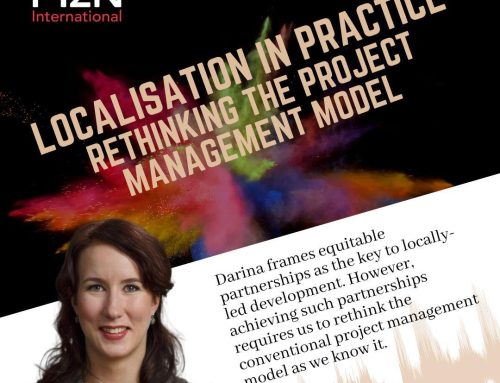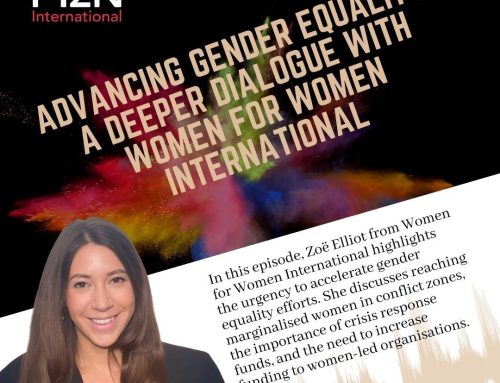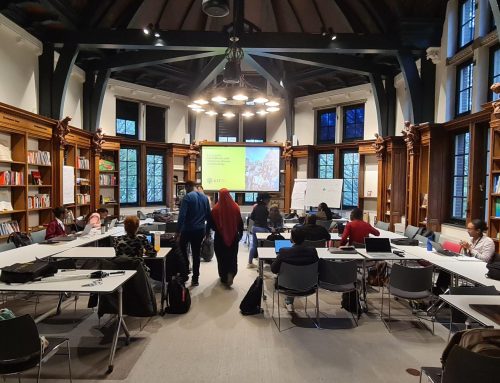These truly are challenging times. The COVID-19 pandemic is threatening the existence of numerous NGOs around the world. According to results of the Bond survey published in October 2020, about half of the network’s 400 UK NGO members are likely to go bankrupt by 2023; small and medium-sized organisations are especially at risk.
Just because an organisation is still around does not mean it is not struggling financially. About 65% of the UK NGOs expect a significant decrease in funding in the upcoming two years, leading to cost-cutting measures and staff redundancies. Health-related absences and disrupted operations during lockdowns affect those organisations which are still up and running, often resulting in increased frustration with the fluctuating workload, inefficient processes, and inept strategies. ‘It’s hard to get things done now’, the CEO of an iNGO confessed to me in late January.
some NGOs we work with still manage to thrive despite adversity.
Crises exacerbate weaknesses, bringing to light the organisational structures which need reform. It is noteworthy therefore to see that some NGOs we work with still manage to thrive despite adversity. For example, our friends at Interpeace increased their funding base in 2020, partly due to changes MzN and Interpeace implemented together in 2018.
So what makes a non-profit successful against the odds? My experience clearly shows that resilient organisations share at least four significant commonalities: They are accustomed to change, have highly diversified income streams, a more digital infrastructure, and are quicker in establishing new partnerships. In short, these NGOs are agile.
What Exactly Does ‘Agile’ Mean?
Over the last 10 years, agility has developed from an idea to a concrete way of working. To survive and thrive, most NGOs will need to become agile to some extent. So what exactly is agility and how do organisations go about becoming more agile?
To survive and thrive, most NGOs will need to become agile to some extent.
An agile NGO is less based on hierarchy and more on localised decision-making and shared information. It is a shift from the old-fashioned, traditional, hierarchical structure to a more organic, responsive, and flexible one. As a result, agile organisations are quick to change course if necessary – and thus better equipped to respond to challenges.
In an agile setting, the management structure in a traditional sense is redundant. That does not mean that there is no structure: An agile organisation has an operational core responsible for routine tasks, such as legal, fiducial, financial, IT and HR matters. The rest of the team is flexible and autonomous, free to use their creativity to make decisions as they see fit. Tasks that create value through creativity are the ones that benefit from agility most.
5 Key Attributes of an Agile NGO
Agility is essential when it comes to effective business development, establishing partnerships quickly and flexibly, generating income from multiple streams and generally innovating new ways of generating impact. Our experience clearly shows that the more agile an NGO is, the better they cope – and even thrive – in times of crisis.
In my experience, there are five key attributes of an agile NGO:
- The strategy sets targets but does not prescribe in detail how to achieve them
- Obsession with data and performance metrics
- Platform-based work
- Trust-based collaboration
- Diversified income streams
We will take a look at them here in more detail:
Strategy Sets Targets, People Achieve Them
An agile organisation sets and agrees on a target and the measures that will be taken to see if a target is being met. No more, no less. The backbone of any agile organisation is its people, the trust amongst them and the capacities they share, allowing for a set-and-agreed-upon target to be met in various ways. So the strategy does not prescribe how to achieve these targets, people do.
This approach to strategic planning is different from traditional organisations which depend on the board or top-level management to set the way of doing things. The role of management in an agile NGO is to provide the resources and tools necessary to reach the targets and to remove any obstacles standing in the way of their realisation. Management in an agile organisation is not separate from the organisation but is in service to it.
Management in an agile organisation is not separate from the organisation but is in service to it.
This strategic approach also applies to the localisation debate: Global organisations might set specific targets, but the local office ultimately decides what structures and systems are needed to make them a reality.
Data Is the Key to Impact
Measuring, verifying, reporting, learning, transforming the lessons into foresight is key. Data collection and analysis are at the heart of every agile and efficient NGO. Data is the key to transforming hindsight into insight, in turn providing foresight.
It is not about control, it is about learning what works. To earn credibility with potential donors and create an effective circle of innovation, an ‘obsession’ with data is key. Take War Child as an example, an MzN partner which put data analysis at its core in 2020. By doing so, War Child has already attracted substantial donor endorsements, and, more importantly, the organisation is learning what works best to make the greatest impact possible.
Go Digital
An agile organisation is platform based. A predominantly digital platform has numerous benefits. It allows the NGO to rapidly form partnerships and projects. It also provides a practical way to more easily complete routine tasks. From payments, approvals and bid submission to HR and hiring, anything that can be done digitally should be. The more digital processes that are in place, the more time is freed up for people to focus on the creative and complex tasks at hand. A digital platform also provides the organisation with a more flexible working model. Asynchronous work arrangements allow people to work when it suits them, resulting in more efficient and motivated employees.
Trust Is Crucial
How do you build trust when the only space you share is virtual? You earn it! Every team member in an agile organisation should have access to as much information as legally possible and the analysis of team goals, programme performance and even individual targets should be transparent. This creates a shared reality which, in turn, builds trust.
Not only is it essential for management to be able to trust its employees, and for employees to be able to rely on one another, but management must inspire trust in its employees as well. Data transparency is the key to cultivating trust within the company, as well as outwards, to attracting potential partners and donors. A digital platform makes data, such as individual performance objectives and indicators, accessible to everyone – team members, employers and donors alike. A trust-inspiring organisation is a basis for establishing beneficial partnerships and diverse avenues of funding – the building blocks of an agile NGO.
Data transparency is the key to cultivating trust within the company, as well as outwards, to attracting potential partners and donors.
Diversified Funding
While it is tempting to rely on grant funding, the COVID-19 crisis has made it clear that it is not a sustainable source of income. Government funding should be considered a loan to kickstart or scale up a programme; it is not, however, a viable path to sustained impact. Our experience has made it clear that successful organisations do not just rely on one source of funding, they diversify their streams of income.
Interpeace, an international organisation that supports local peacebuilding initiatives and an MzN client, is a prime example of an NGO that is weathering the storm of the current crisis thanks to the diversification of its funding. After taking a hard look at operations and the organisation together with MzN in 2018, Interpeace broke down its traditional hierarchy, freeing up skilled people to act more independently and make decisions more quickly and effectively. They focused on establishing new digital processes and local partnerships. Most importantly, Interpeace broadened its spectrum of funding sources, resulting in a more diversified portfolio.
Successful, agile organisations diversift their funding sources.
Change Is a Choice – and a Chance
The NGO sector is suffering, and unfortunately many organisations will fail to keep their heads above water. Yet there are options changemakers have and actions they can take to survive – and thrive – in difficult times. Ultimately, change is a choice: be passive and forced to adapt or take an empowered stance and drive your change.
Driving your change requires prioritising what you can control, such as building an agile data-, digital-, trust-based organisation, which can quickly and efficiently create new partnerships and diversify its funding. Then your organisation will stand a fighting chance when another crisis hits, allowing you to stay on a steady course towards achieving the SDGs in the limited time we have left.
Contact Chris for more information on agile change management.






